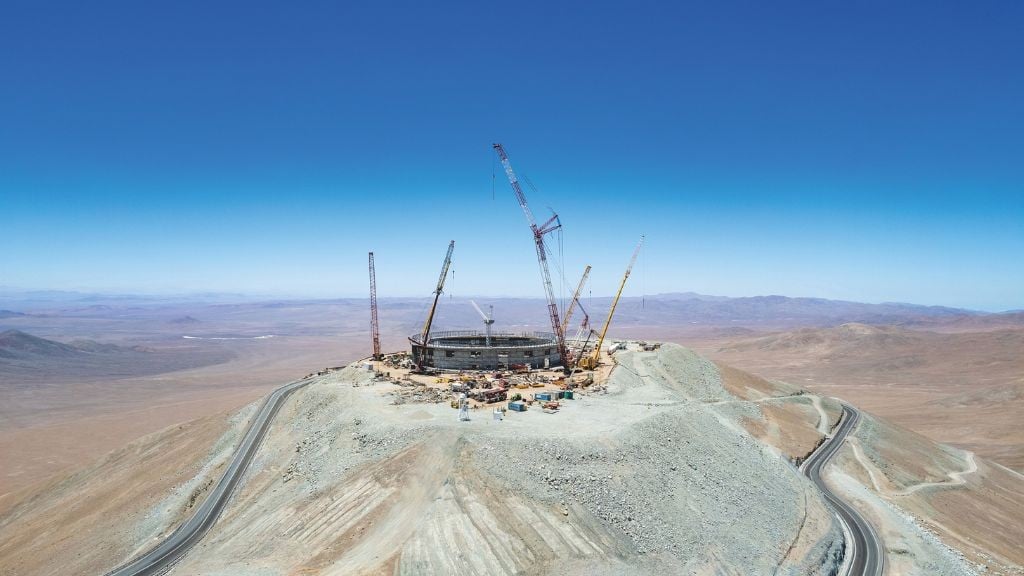PERI concrete and engineering solutions used to construct world’s largest telescope
The MULTIFLEX Girder Slab Formwork, Stacking Towers, and PERI UP Scaffolding kit were used to lay the foundation

The cool, dry, and cloud-free Atacama Desert in Chile offers the ideal conditions for astronomical observations and is already home to several telescopes. It's not surprising that the world's largest telescope is being built on the 3,046-metre-high Cerro Armazones mountain, and is expected to go into operation in 2028 with the help of PERI engineering and scaffolding solutions.
Scientists plan to use the ELT to gain new insights into the early history and future of the universe or even discover new, Earth-like planets. To assist this ambitious project, PERI supplied the formwork and scaffolding systems required for the construction of the foundation and central base of the telescope.
The size and capabilities of the ELT surpasses the performance of existing telescopes many times over. With a primary mirror 39 metres in diameter, the telescope can collect 15 times the amount of light compared to previous equipment.
PERI supplies advanced engineering support to the project
Building the telescope requires advanced technical knowledge. The main mirror consists of 798 individual, movable hexagonal mirrors, which ensure that the mirror shape corresponds to an optically ideal shape at every temperature and inclination of the telescope. Before the light even reaches the cameras, it is detected via a further mirror, which can be deformed using almost 6,000 adjusting elements and thus compensates for air turbulence. This is supported by six "artificial stars", which are projected by laser into the atmosphere at a height of around 90 kilometres. The complete structure will weigh 3,700 t after completion.
PERI also contributed to a speedy construction process by engineering the simplest possible assembly solutions. PERI engineers reacted quickly and effectively to special, ad-hoc project requirements and aligned the construction site planning accordingly was also essential. PERI also provided support from a commercial and logistical point of view and made a further contribution to efficient construction site execution.
High pressure and load absorption
The foundations for the telescopic structure were laid back in 2018 using the lightweight Handset Alpha panel formwork. TRIO Panel Formwork was used for the massive wall superstructures that now carry the steel structure of the enormous telescopic dome. The 2.40 m x 2.70 m TRIO Panels were designed for the large volume of concrete and the associated high concrete pressure. Almost in parallel, a complex shoring structure grew upwards with the help of ST 100 Stacking Towers to support the loads of the cantilevered platform above.
The shoring was erected and dismantled using the stacking principle, whereby the individual frames were quickly and easily assembled without bolts or screws. By combining the Stacking Towers with components from the PERI UP Scaffolding Kit, the accesses to the platform above could then be created.
Flexible solution for a geometrically demanding area
MULTIFLEX Girder Slab Formwork was used for the so-called base in the middle of the ELT, allowing all areas of the circular surface to be covered as quickly and flexibly as possible. The MULTIFLEX Girder Slab Formwork is predestined for challenging geometries, such as the round slab area of the base, as both the spacing of the girders and props and the alignment of the girders can be individually adjusted.
First light is still a while away
After around half of the construction work on the ELT was completed in summer 2023, ESO estimates that the remaining work will probably continue until 2028 before the so-called first light is expected. At first light, the ELT will see real starlight for the first time and will then be able to provide mankind with new insights into the universe.



